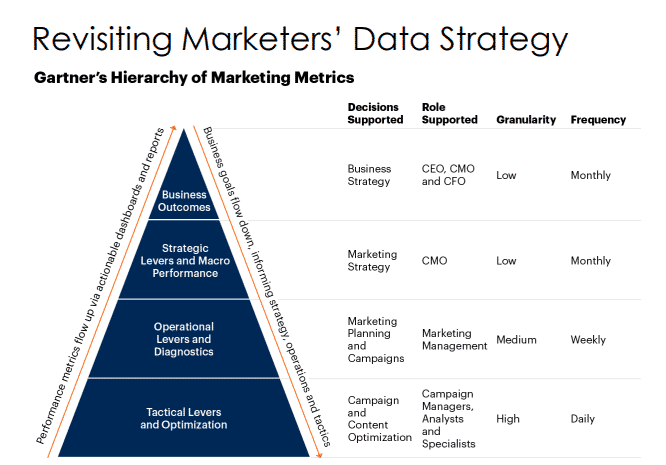Why Return on Effort is an essential metric for content marketers.
The demand for creative, high-quality content is growing in our digital world. Consumers want engaging, personalized experiences when connecting with brands. As a result, customer experience with content is a top metric of success in many marketing organizations.
“Customer expectations today are rising at rates that we’ve never seen,” said Anjali Yakkundi, Vice President of Product Marketing and Strategy at Aprimo, at our recent MarTech conference. She emphasized this point by citing a Gartner study, which found that 81% of organizations expect to compete based on customer experience.
“That’s because these digital startups that we’ve seen succeed over the last ten years have really changed the game,” she said. “Customers now expect personalized, relevant experiences on any channel in which they’re interacting with your brand.”
She added, “Customers aren’t willing to wait months and months anymore for that amazing customer experience; they want it now. So these content and creative teams have to work with a lot more agility than they have in the past.”
Building agility and adaptiveness means content teams should know how much they’re getting back for their content efforts. That’s why so many teams are adopting content return on effort (ROE) measurement frameworks.
Use a content return on effort measurement framework
Measuring the effort content marketers put into campaigns — the time spent, resources used, and team members involved — gives more context to decision makers. Instead of limiting success measurement to the broader metrics of ROI, content ROE gives marketers actionable data at a granular level.
“Thinking about this more holistic picture is what we think is called content return on effort, ” said Yakkundi. “Content return on effort not only looks at how what your impressions are as they’re coming back across campaign types across different channels across different mediums or just different campaigns. It’s also starting to look at that performance in the context of the effort that you put in.”
She added, “We can make in-the-moment edits and changes to that asset to really drive better outcomes.”
Create a data-based content strategy
Content marketing strategies no longer revolve around output. Now, it’s all about creating content that leads to desired outcomes. Instead of relying on budget increases that may or may not assist these efforts, marketers may be better off developing data-driven content strategies based on ROE.
“Marketers have so much data at their disposal and we need to start using that data, especially for creative teams,” said Yakkundi. “Use that data to start prioritizing content and the content budgets that matter most; those that are going to drive the best customer experiences and the best outcomes for your business.”
Content efforts that neglect customer data have little chance of improving campaign outcomes. What’s more, it makes ROI measurement much more difficult. This is where adopting content ROE measurements is vital.
Content ROE assists ROI measurements with tactical, in-the-moment data, which helps CMOs and other team members make strategic level marketing decisions.
Yakkundi pointed to a helpful Gartner illustration that highlights four tiers of marketing metrics that assist these measurement efforts. Visualizing data strategies this way helps marketers prioritize business outcomes, powering them through tactical optimization, planning, and strategy.
Taken together, these metrics can help content marketers and creatives improve outcomes. However, problems arise when the content measurement methods are incomplete.
“When we’re thinking about tactical measurement, it’s not necessarily something that I think is a best-in-class process, said Yakkundi. “The reason why is we’re very focused on the campaign; it’s not focused on the content level. And because of that, there’s actually very little actionable data for content and creative professionals.”
Develop a martech strategy to support data needs
Once marketers have a data-based content strategy and a content return on effort measurement framework, they can use their martech stacks to extract actionable campaign and content data. This gives marketers and creatives — those who are creating content — instant insights and feedback to make responsive changes.
“The martech strategy is thinking about your data and what technologies are going to sort your data at each of these levels,” said Yakkundi. “Content return on effort is such a key piece, but it’s a tactical day-to-day piece. If you do that you’ll see performance and operations at a strategic level.”
___
by Corey Patterson
source: MarTech










